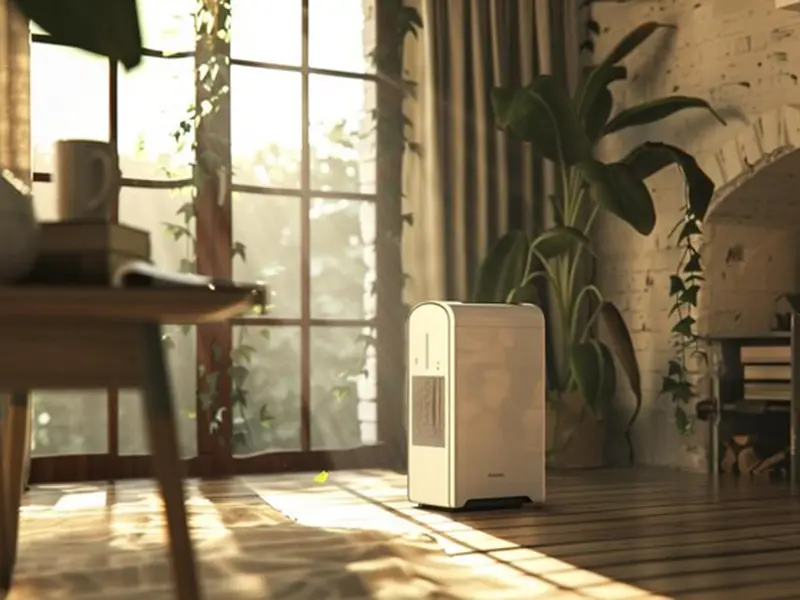How Is Copper Tube Copper Fin Heat Exchanger Technology Adapting to Future Cooling Demands?

Cooling demands have surged globally, driven by rising temperatures and growing populations in warmer regions. In International Energy Agency (IEA) member countries, space cooling now accounts for up to 30% of electricity use in residential buildings. Copper tube copper fin heat exchangers address these challenges by offering superior thermal conductivity, faster cooling, and enhanced energy efficiency. Their recyclability and corrosion resistance further ensure sustainability and long-term performance. Companies like senjun are at the forefront of this innovation, producing advanced solutions for refrigerators, freezers, and other cooling systems.
Key Takeaways
- Copper tube copper fin heat exchangers transfer heat very well. This improves cooling and uses less energy.
- New designs like thinner tubes and grooves inside help transfer heat better. These systems are smaller and better for the environment.
- Using refrigerants that harm the planet less with copper exchangers helps the Earth and cuts harmful gases.
Understanding Copper Tube Copper Fin Heat Exchanger Technology
What Are Copper Tube Copper Fin Heat Exchangers?
I often describe copper tube copper fin heat exchangers as the backbone of modern cooling systems. These devices operate on a simple yet effective principle. First, a fluid flows through copper tubes, which absorb heat due to copper's excellent thermal conductivity. Next, the attached fins amplify heat transfer by increasing the surface area. This process allows the system to efficiently cool or heat the surrounding medium. Finally, the heat exchanger completes a continuous cycle, ensuring stable temperature control. This seamless operation makes it indispensable in various cooling applications.
Key Benefits of Copper in Heat Exchangers
Copper stands out as the ideal material for heat exchangers. Its high thermal conductivity, approximately 400W/m.K, ensures rapid heat transfer. I also value its corrosion resistance, which comes from a natural oxide layer that protects the metal. Copper's predictable properties simplify manufacturing and allow for thinner walls in small-diameter tubes without compromising strength. This reduces costs in both production and repairs. These qualities make copper tube copper fin heat exchangers not only efficient but also durable and cost-effective.
Applications Across Cooling Systems
Copper tube copper fin heat exchangers find use in a wide range of systems. In HVAC units, they regulate indoor air temperatures by transferring heat between indoor and outdoor environments. Refrigeration systems, including those in refrigerators and freezers, rely on these exchangers for energy-efficient cooling. They also play a critical role in medical ultra-low temperature refrigerators, ice makers, and dehumidifiers. Companies like senjun specialize in producing these advanced solutions, ensuring optimal performance in applications such as display cabinets and wine coolers.
Innovations Driving Efficiency in Copper Tube Copper Fin Heat Exchangers

Smaller-Diameter Copper Tubes for Enhanced Performance
Smaller-diameter copper tubes have revolutionized the performance of heat exchangers. I’ve seen how their compact design allows for more efficient heat transfer. Copper’s high thermal conductivity, approximately 400W/m.K, ensures low thermal resistance, enabling rapid temperature regulation. These tubes also reduce the internal volume of coils, which minimizes the refrigerant charge required. This not only enhances system efficiency but also supports eco-friendly practices by lowering resource consumption.
In space-constrained applications, smaller-diameter tubes offer a significant advantage. Their compact size enables lightweight and flexible designs without compromising performance. Companies like senjun leverage this innovation to create advanced Copper Tube Copper Fin Heat Exchanger solutions for refrigerators, freezers, and other cooling systems.
Inner Grooving for Improved Heat Transfer
Inner grooving is another breakthrough that has transformed heat exchanger efficiency. By increasing the internal surface area of copper tubes, this design facilitates greater contact with refrigerants. I’ve observed that grooved coils transfer heat more effectively than smooth ones. The enhanced surface-to-volume ratio ensures better thermal performance, especially in small-diameter coils.
This innovation is particularly valuable in applications requiring precise temperature control, such as medical ultra-low temperature refrigerators and wine cabinets. Senjun’s expertise in producing copper aluminum fin heat exchangers ensures these systems achieve optimal performance.
Integration with Eco-Friendly Refrigerants
The integration of eco-friendly refrigerants has become a priority in modern cooling systems. Smaller-diameter copper tubes play a crucial role in this transition. They reduce the volume of refrigerants needed, aligning with sustainable practices. For instance, a case study by GD Midea Refrigeration Equipment Co., Ltd. demonstrated how 4mm copper tubes lowered heat exchanger volume and cost while minimizing refrigerant use.
Copper’s compatibility with natural refrigerants like propane (R290) and carbon dioxide (R744) further supports this shift. These refrigerants have low global warming potential (GWP), reducing greenhouse gas emissions. Senjun’s commitment to innovation ensures their heat exchangers meet these environmental standards while maintaining high efficiency.
Environmental Advantages of Modern Copper Tube Copper Fin Heat Exchangers
Energy Efficiency and Reduced Resource Consumption
I’ve always admired how modern copper tube copper fin heat exchangers optimize energy use. Their exceptional thermal conductivity ensures efficient heat transfer, which reduces energy consumption across various applications. For instance, these heat exchangers play a vital role in power generation and chemical processing by managing fluid flow and temperature control. They also contribute to heat recovery systems, conserving resources and minimizing waste.
The use of small-diameter copper tubes further enhances efficiency. These tubes reduce refrigerant volume, which lowers resource consumption and operational costs. Copper’s recyclability adds another layer of sustainability. By reusing copper, we minimize the need for new mining activities, reducing environmental degradation and carbon emissions. Companies like senjun leverage these advantages to produce cutting-edge solutions for refrigerators, freezers, and other cooling systems.
Lower Greenhouse Gas Emissions
Reducing greenhouse gas emissions has become a priority in cooling technology. I’ve seen how copper tube copper fin heat exchangers support this goal by enabling the use of low global warming potential (GWP) refrigerants. Natural refrigerants like propane (R290) and carbon dioxide (R744) work seamlessly with these systems, offering high efficiency with minimal environmental impact.
Small-diameter copper tubes also play a crucial role. They lower refrigerant charge requirements, which reduces emissions while maintaining system performance. This innovation aligns with global efforts to decarbonize cooling systems. Senjun’s advanced heat exchangers exemplify this commitment, ensuring both efficiency and environmental responsibility.
Compatibility with Low GWP Refrigerants
The compatibility of copper tube copper fin heat exchangers with low GWP refrigerants is a game-changer. I’ve noticed how these systems adapt to modern refrigerants without compromising performance. Small-diameter copper tubes improve heat transfer and allow for compact designs, making them ideal for high-pressure systems.
This adaptability supports the transition to eco-friendly refrigerants, aligning with sustainability goals. By integrating these technologies, senjun continues to lead the way in producing efficient and reliable cooling solutions for applications like medical ultra-low temperature refrigerators and wine cabinets.
Real-World Applications of Advanced Copper Tube Copper Fin Heat Exchangers

Heat Pumps for Residential and Commercial Use
I’ve seen heat pumps become a cornerstone of energy-efficient heating and cooling in both residential and commercial spaces. These systems rely heavily on copper tube copper fin heat exchangers to transfer heat effectively. During winter, the heat exchanger absorbs heat from the outside air and transfers it indoors. In summer, the process reverses, expelling indoor heat to the outside. This dual functionality makes heat pumps an eco-friendly alternative to traditional HVAC systems. Senjun’s advanced heat exchangers enhance the performance of heat pumps by ensuring optimal thermal conductivity and durability, even in extreme conditions.
Air Conditioning Systems in Modern Buildings
Air conditioning systems in modern buildings depend on heat exchangers to maintain comfortable indoor environments. I’ve observed how these systems use copper tube copper fin heat exchangers to regulate temperature and humidity efficiently. The heat exchanger absorbs heat from the indoor air and expels it outside, ensuring a consistent and pleasant atmosphere. This technology is particularly vital in large commercial buildings, where maintaining energy efficiency is a priority. Senjun’s expertise in producing high-performance heat exchangers ensures that these systems operate reliably, even under heavy usage.
Industrial Cooling Solutions
Industrial processes often generate significant heat, which requires efficient cooling solutions. Copper tube copper fin heat exchangers play a critical role in managing these thermal loads. I’ve noticed their application in industries such as chemical processing, power generation, and food production. These heat exchangers ensure precise temperature control, which is essential for maintaining product quality and operational efficiency. Senjun’s innovative designs cater to these demanding environments, offering robust and reliable solutions for industrial cooling needs.
senjun: A Leader in Heat Exchanger Innovation
About Ningbo Senjun New Materials Co., Ltd.
Ningbo Senjun New Materials Co., Ltd. has earned its reputation as a trusted innovator in the cooling industry. The company specializes in the research, development, and production of wire tube condensers and copper aluminum fin heat exchangers. Their solutions cater to a wide range of applications, from refrigerators and freezers to medical ultra-low temperature refrigerators and dehumidifiers. By focusing on high-quality manufacturing and tailored designs, senjun consistently meets the diverse needs of its clients.
- Extensive experience in producing wire tube condensers and copper aluminum fin heat exchangers.
- A strong emphasis on research and development to stay ahead of industry trends.
senjun’s Contributions to Copper Aluminum Fin Heat Exchangers
Senjun has made significant advancements in copper aluminum fin heat exchanger technology. Their products prioritize sustainability and thermal efficiency, ensuring reliable performance across various industries. I’ve noticed how they incorporate recycled copper into their manufacturing processes, supporting eco-friendly practices.
Senjun also employs advanced materials like high-quality copper alloys and optimized aluminum fins to enhance durability and heat transfer. Their use of precision laser welding techniques improves product longevity while reducing energy consumption. Additionally, customizable fin spacing and precise hole pitches allow their heat exchangers to meet the unique demands of different applications.
Applications in Refrigerators, Freezers, and More
Senjun’s heat exchangers play a vital role in numerous cooling systems. In refrigeration systems, including refrigerators and freezers, they enhance cooling efficiency and reduce energy consumption. Medical ultra-low temperature refrigerators rely on these heat exchangers for precise temperature control, which is critical for storing sensitive materials like vaccines.
Their applications extend to ice makers, where they ensure rapid and consistent ice production, and dehumidifiers, which improve indoor air quality by efficiently removing moisture. Senjun’s solutions also support display cabinets in retail and food industries, maintaining optimal temperatures for showcased products.
By leveraging their expertise, senjun continues to lead the way in delivering innovative and reliable cooling solutions. Their commitment to quality and sustainability sets them apart in the competitive landscape of heat exchanger technology.
The evolution of copper tube copper fin heat exchanger technology has redefined cooling systems across industries. Its high thermal efficiency, versatility, and compatibility with modern refrigerants make it indispensable. Smaller-diameter coils and advanced designs ensure better heat transfer and sustainability. Industries adopting these solutions benefit from reduced costs, durability, and environmental advantages.
Continued innovation is essential for meeting future cooling demands while addressing energy efficiency and environmental concerns. Companies like senjun lead the way by delivering cutting-edge solutions tailored to diverse applications. I encourage industries to explore these advancements and partner with leaders like senjun to achieve sustainable and efficient cooling systems.
FAQ
What makes copper tube copper fin heat exchangers energy-efficient?
Copper’s high thermal conductivity ensures rapid heat transfer. Smaller-diameter tubes and inner grooving further enhance efficiency by reducing refrigerant volume and optimizing thermal performance.
How does senjun contribute to sustainable cooling solutions?
Senjun integrates eco-friendly practices by using recycled copper and designing heat exchangers compatible with low GWP refrigerants. Their innovations reduce energy consumption and environmental impact.
Are copper tube copper fin heat exchangers suitable for industrial applications?
Yes, they excel in industrial settings. Their durability and precise temperature control make them ideal for chemical processing, power generation, and food production.


















